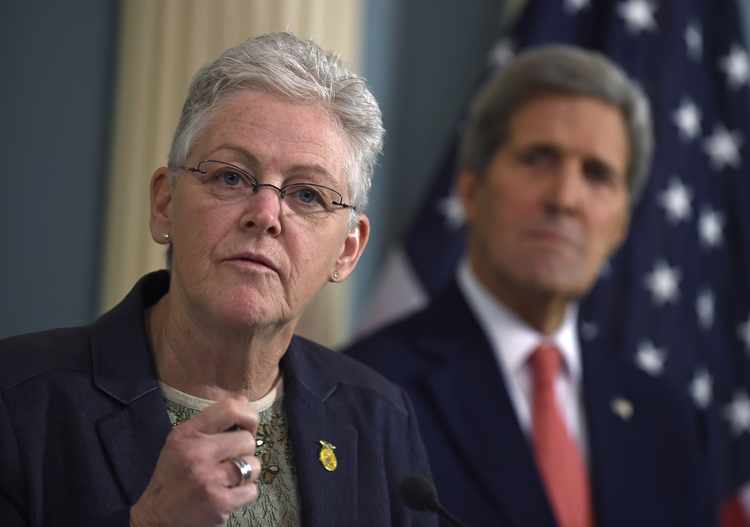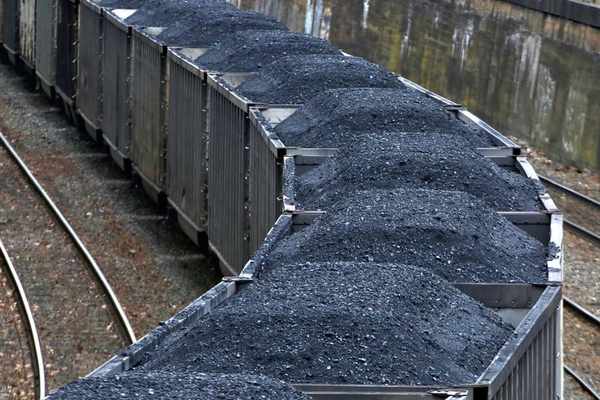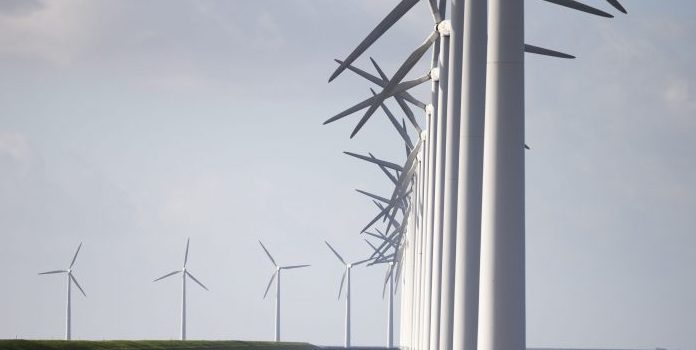(Vince Bielski, RealClearInvestigations) Last Labor Day, candidate Joe Biden made an impassioned pitch to leaders and members of the AFL-CIO, America’s largest labor federation.
Stressing that “the great American middle class was built by unions,” he jabbed his finger in the air for emphasis as he promised, “I’m going to be the strongest labor president you have ever had,” drawing a smile from his longtime ally and friend, AFL-CIO President Richard Trumka.

But Biden has also declared climate change the nation’s greatest challenge and is supporting strategies that could cost struggling union members hundreds of thousands of good-paying jobs that will not be easily replaced. From interviews with labor leaders, RealClearInvestigations has found that President Biden may be hard-pressed to balance the competing demands of these two core constituencies — unions and environmentalists. How he addresses those tensions will shape his much-anticipated climate plan to cut carbon emissions.
Industrial labor unions and the Biden administration are publicly committed to achieving net-zero emissions from energy generation. What divides them is one of the hot-button issues in the clean energy transformation – how fast to go? No matter the speed, the last leg of the road to net-zero is still unmapped since questions remain about the cost and performance of pivotal technologies like carbon capture and battery storage that are essential to finishing the trip.
Biden set an aggressive target because eliminating carbon dioxide from power generation must occur before the electrification of vehicles and industry – the other major emitters – can reduce their carbon dioxide footprint. General Motors’ recent pledge to shift production completely to electric vehicles by 2035 won’t reduce pollution if they are plugged into a dirty grid to recharge batteries.
With about 750,000 mostly well-paying middle-class fossil-fuel jobs on the line, several unions in the energy sector have rejected Biden’s 2035 target as too ambitious. They are calling for a 2050 deadline, giving the industry more time to improve and roll out its silver bullet: technology to capture the carbon before it is released into the atmosphere and keep mines, drills and power plants open for business.
“We will not support policies that accelerate the closure of coal plants. The closures are already happening more rapidly than communities can deal with and are leaving economic devastation behind them,” says Lee Anderson, director of government affairs for the Utility Workers Union of America, an AFL-CIO affiliate with 50,000 members. “However, a great many people will be advocating for that. And many of them are very politically powerful. So to the extent that that train starts to leave the station, we are going to make a lot of noise about whether that’s going to happen in a fair way or not.”
Unions have an ally in Manchin, whose roots in the coal economy run deep. His grandfather was a miner and Manchin worked in a coal brokerage before becoming governor and later joining the Senate, where he was instrumental in securing pensions and health care benefits for more than 100,000 miners and widows. The United Mine Workers made him an honorary member last year.
Manchin is also a bipartisan horse trader who sees the climate crisis as a chance to transform coal country into a hub of green manufacturing so fossil-fuel workers aren’t left behind. What does he want? His priority is the renewal and expansion of an effective federal tax credit started under President Obama to spur clean energy manufacturing, including carbon dioxide capture and storage technology, in fossil-fuel states like West Virginia. How fast is he willing to cut fossil-fuel emissions? He recently hinted that he could support a 2050 net-zero target in line with the position of some unions, telling the media it’s more achievable than lawmakers had thought.
Energy unions see the more ambitious 2035 date as both capricious and an existential threat.
“We support the transition to renewable energy but disagree with arbitrary numbers that don’t take into account our current energy mix and energy needs,” says Yvette Pena O’Sullivan, executive director of the 500,000-strong Laborers’ International Union of North America, whose members build solar, wind and gas facilities and maintain nuclear and coal plants. “2050 is certainly better than 2035.”

The nonbinding Paris Agreement can’t compel China to change course, so Biden is banking on the power of the U.S. example. Kerry, the climate envoy, told a global business forum in January that coal-using countries need to phase out their use five times faster than the current overall pace. U.S. miners and plant operators in coal states like Wyoming, West Virginia and Pennsylvania, however, don’t want to be the collateral damage from setting that example for the world. The United Mine Workers also want other nations to keep burning coal since exports make up about 15% of U.S. production.
Utility, mine and construction unions say there’s a better path to clean energy. A slower ramp-up with a 2050 deadline would save jobs by providing more time to improve the performance and lower the cost of carbon dioxide capture and storage technology for fossil-fuel plants.
The technology, which requires its own industrial-size facilities and energy source to operate, stumbled out of the gate. The $1 billion Petra Nova project in Texas, the only large carbon dioxide capture installation in the U.S. for coal, was initially heralded as a triumph until it was put on indefinite pause in 2020 because of troubled economics. Petra Nova also wasn’t capturing a lot of carbon dioxide, according to a report by a clean energy advocate, the Energy and Policy Institute, bolstering protests from environmental groups like the Sunrise Movement that say the technology is an expensive boondoggle.

While the world waits for carbon dioxide capture, Biden’s team and Senate Democrats are debating a range of options to slash emissions, including a carbon dioxide tax that Manchin has long opposed and a clean energy standard that he might support. A federal standard is a law that actually forces utilities across the country to accelerate the rollout of clean energy of any kind, including carbon dioxide capture on fossil fuel plants and nuclear energy, on a set schedule to eventually reach net-zero emissions by a specified year.
“There is nothing magic about the year 2035, but pushing hard right now for an ambitious target is the right thing to do,” says Julio Friedmann, a former DOE appointee overseeing clean coal technology research and now an energy policy scholar at Columbia University. “If we got to net-zero emissions by 2040, that would be titanic. We weren’t even talking about these targets five years ago.”
Even advocates say finding a filibuster-proof 60 votes in the Senate for a clean energy standard will be a tall order. But pairing it with a longer-term target of 2050 makes it more politically viable. A growing number of states such as Arizona and utilities including Duke Energy have already adopted such a deadline for their own operations.
Sen. Tina Smith, a Minnesota Democrat who is a leading advocate for setting a standard, proposed a 2050 deadline in her bill that won the support of the Utility Workers Union and United Steelworkers. As Smith prepares to reintroduce the legislation, there’s growing support in the Senate for this approach. However, the target date is a point of negotiation – and Smith has indicated she understands why.
“We have tended to discount the impact of that transition on people who have worked in the fossil-fuel energy world their entire careers. And that’s a big mistake,” Smith said on a call with media. “We should be thanking people who make sure that the lights go on. We need to put them at the center of this transition.”

Fossil fuel workers – miners, drillers, truckers, builders, electricians, engineers and equipment and plant operators – have reason to worry about massive layoffs from a climate law. Princeton University researchers recently examined five possible pathways to reaching net-zero emissions by 2050 without the benefit of carbon capture for coal. In all pathways, the vast majority of mines and all coal power plants shutter by 2030, although the coal export business will live on. The ranks of 600,000 natural gas workers fall by more than two-thirds by 2050 in most pathways.
Such job losses would rival the dislocations in the American auto industry that left cities like Detroit in tatters. The Big Three automakers shed about 600,000 employees, or more than half of their workforce, from 1979 to 2003 in the U.S. and Canada.
To assuage labor’s anxiety, the Biden administration repeats at every turn that the energy transition will create “millions” of green jobs. Economists put the estimate at around 2 million to 3 million. Some of them, particularly those with regulated utilities, would be filled by workers from unions like the International Brotherhood of Electrical Workers and pay well.
But many fossil fuel workers won’t be riding the renewable energy boom. Most new jobs will be in the construction of wind and solar farms, which is temporary work and often not in the same regions that provide fossil fuel employment. The pay is significantly lower too. The median wage for a solar installer is about $45,000 a year, according to the Bureau of Labor Statistics.
Once the wind and solar facilities are up and running, they won’t be hiring many fossil fuel workers. A coal plant employs a couple hundred workers, paying about $82,000 for a skilled operator. A renewable facility mostly runs by itself.
“Look at a picture of a solar or wind farm and there are no cars in the parking lots, nobody is on-site,” says Donnie Colston, director of utilities at IBEW, which has 775,000 members. “Workers come by periodically for maintenance in roving crews.”

Dennis Dougherty, executive director of the Colorado AFL-CIO, says the executive order is an encouraging first step toward a “just transition” for coal communities. He and other representatives from coal country groups met with the policy director of Biden’s transition team last year to discuss creating a national plan to provide financial support and training to displaced workers and investments to diversify local economies shattered by the closing of mines and plants.
If Biden delivers on his revitalization plan, that could help secure Manchin’s crucial support for his proposal to rapidly slash emissions, according to political scientist Matto Mildenberger, author of a recent book on climate policy, business and labor. “That bargain might be hard to find, and it may create conflicts, but President Biden and Gina McCarthy care about the interests of workers and will try to make it happen.”
But the United Mine Workers have reason to doubt that the president can deliver on a multibillion-dollar redevelopment of coal country, particularly amid a very costly pandemic. From the collapse of the auto industry in the 1980s to the more recent gutting of manufacturing from free-trade agreements, the federal government has stumbled in creating a meaningful rebound for blue-collar workers. Biden’s approach would expand on the Obama administration’s $9 billion plan for coal communities, which died in Congress.
“I can’t think of an economic transition we have gone through in the last 100 years that has been fair and just for American workers,” says Jason Walsh, who developed Obama’s plan as a White House senior adviser and now serves as executive director of the BlueGreen Alliance, a coalition of labor and environmental groups. “That’s why there is quite a bit of resistance to the term ‘just transition’ in the labor movement.”…Original Source…

